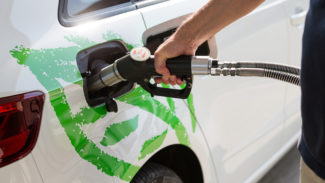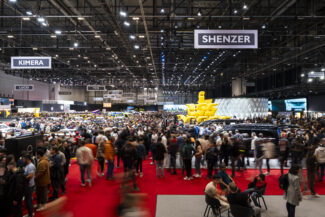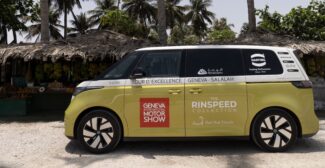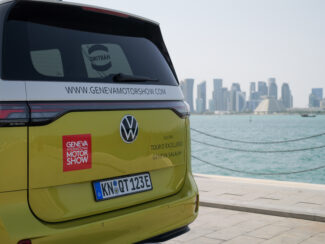Europe’s largest automobile club, Germany’s ADAC, has unveiled the results of its annual vehicle environmental impact assessment, the “Ecotest“. While electric vehicles are moving in the right direction among the cleanest cars around, the two top spots are held by CNG (Compressed Natural Gas) vehicles. This calls for reflection on this often overlooked drive technology.
No less than 112 different models were assessed by ADAC in 2021 as part of its Ecotest environmental impact assessment. Pollutants, such as carbon monoxide (CO), nitrogen oxides (NOx) or particles as well as carbon dioxide (CO₂) emissions, are measured. Points are given to each vehicle depending on the type and quantity of emissions, and then converted into an easily understood star ranking.

Gas wins big
Two natural gas-fuelled cars had the best assessment results: the Seat Leon TGI, followed closely by the VW Golf TGI. Surprising? Not really. For ADAC’s engineers, CNG vehicles have long demonstrated that they emit less pollutants into the air than diesel and gasoline cars, and emit less CO₂.
In practical terms, the Seat Leon TGI emits 91 g of CO₂/km with a measured consumption of 4.2 kg gas/100 km. The calculation is based on the German gas mix, which includes 40% biogas. If the percentage of biogas is higher, the assessment is even better, with CNG cars verging on carbon neutrality if they run 100% on biogas. The TDI diesel version of the same vehicle does not come close; in spite of low diesel consumption of 4.7 litres/100 km during testing, it released 147 grams of greenhouse gas emissions.
The Seat and VW both had a 1.5 litre and 130 PS petrol engine. With 17.3 kilos of natural gas in the tank, the range measured is around 400 kilometres.
What about electric cars?
Why are electric cars not at the top of the ranking as one might expect? Quite simply because ADAC bases its assessment on the current german electricity production/consumption mix for its emissions calculations. Thus, an electric car also “emits” CO₂ and pollutants – although not from the tailpipe – as around 50% of German electricity is still produced by thermal (coal, lignite, gas and petrol) power stations. It is worth noting that in Switzerland, only 60% of electricity consumed in our country is produced domestically and is CO₂ neutral (hydraulic, nuclear and renewable). Power imports, mainly from France and Germany, for the remaining 40%, mean that we “import” CO₂ emissions of around 155 g/kWh according to the statistics on energie-environnement.ch, the website of cantonal energy departments in French-speaking Swiss.
Nonetheless, electric cars are ranked right after the two natural gas cars. The Hyundai Kona electric takes third place; the Fiat 500 e is fourth, followed by the Renault Twingo electric, in fifth place. The Toyota Mirai fuel cell car running on hydrogen is ranked eighth, behind the Polestar 2 (Long Range, Single Motor) and the Opel Corsa-e, sixth and seventh ranked respectively.
What we’ve learned
The results of ADAC’s Ecotest offer several lessons. Firstly, the overall results, including thermal vehicles, demonstrate that the industry, regardless of drive, has made and continues to make serious progress in cutting and controlling emissions of pollutants. The rates are continually falling; it is a long-term endeavour that engineers are constantly tackling. To date, although electric vehicles are appropriate and efficient, they are still far off from being suitable for the majority of users due to their inconveniences (price, infrasructure, range, use, etc.). A lot of time and work is still required for electric vehicles to be at the same level of democratisation as thermal vehicles. For a faster transition, all stakeholders in the personal mobility field must improve their collaboration.
The diverse drive technologies currently available on the market allow the consumer to choose the vehicle closest to their actual needs; electromobility is of course part of this, but it is not necessarily the only technological answer. Manufacturers are working non-stop to offer a “mixed-energy” model both from the perspective of technology and new business models, which are rewarding in the long term for all, including the environment. The challenge is huge; it will inevitably involve temporary solutions such as hybrid vehicles, but the objective is largely within the reach of the industry, as long as it is given the time to get there.

It is in this context that all eyes should be on biogas. In addition to being almost neutral in terms of CO2, it falls perfectly into the logic of circular local economies. In many places, gas meters at service stations are supplied, partly or wholly, by regional gas, produced from organic waste collected from local households and restaurants. In addition to this being an endless or almost endless “raw material” source, the technical setup of its infrastructure in vehicles is relatively simple and offers an alternative drive that admirably complements the current mix between thermal and electric vehicles.
In addition, Norway has decided, in the summer of 2021, to grant biogas vehicles the same advantages as those granted to electric vehicles up to now. The same approach has been initiated in France, which is keen to encourage a similar dynamic at European level during its six-month presidency of the Council of the European Union this year.
ADAC/Hyundai/Polestar/Renault/Seat/Stellantis/Toyota/Volkswagen/GIMS/JM















